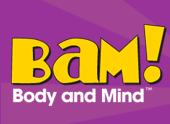Title: Each activity title is designed to be catchy
yet tied to the activity's main theme. When shared with
your students, the title should evoke a sense of interest
and slight mystery that begins to motivate them.
Section: Each BAM! teacher activity series
corresponds to a theme found on the overall BAM!
site.
Investigative Question(s): The investigative questions
are those ideas that your students should be able to speak
to after completing the activity. They are not designed
primarily to be answered directly by your students, although
you may choose to use them in this way. These questions
also express the activity's purpose.
Description of Content: This section provides an
overview of the activity, including key concepts that are
based on the best educational and scientific knowledge of
the topic.
Relevant Standards: This section describes which
portions of the National Science Education Standards,
Benchmarks for Science Literacy, and the National
Health Education Standards the activity addresses.
Objectives: These are instructional objectives
directly oriented toward the activity and connected with
assessment exercises at the end of the activity.
Ideas and Behaviors Common Among Students: This
section provides a review of the literature on students'
pre-existing ideas about the activity content. In some cases,
these ideas represent deeply embedded misconceptions that
must be confronted as a part of meaningful learning of the
activity content.
Materials: This section lists the materials needed
for individual students, groups of students, or for the
entire class. The section includes both equipment as well
as consumable supplies.
Safety: In order to protect students during active
class work, this section provides clear suggestions and
cautions to conduct the activity safely.
Teacher Background: This section provides background
information on the concepts the activity addresses to help
you prepare to conduct the activity with your students.
Procedure: This section provides detailed descriptions
of how to conduct the activity, as well as time estimates
for completing each section. In addition, the procedures
are oriented around a 5-E Learning Cycle: (a) Engagement,
such that student interest is captured, (b) Exploration,
such that students have the chance to develop first-hand
perceptions of the activity concepts, (c) Explanation, such
that the teacher has the opportunity to collect those student
perceptions and focus them on the appropriate lesson content,
(d) Elaboration, such that students have the opportunity
to apply their now -focused knowledge in a new context,
and (e) Evaluation, such that the level of student content
mastery can be determined. Some activities also include
an Extension section with ideas for taking the concepts
learned in the main activity further.
Performance Descriptors: This section provides
analysis questions and evaluation rubrics to guide student
evaluation.
Web Resources: This section lists and describes
suggested websites that provide additional instructional
support.
Text Correlations: Where possible or appropriate,
suggested correlations to commonly used science or health
textbooks are provided.
